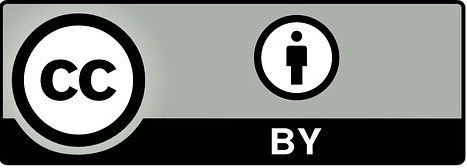The German particle und zwar: conjuction, adverb, connector, discourse marker?
DOI:
https://doi.org/10.17398/2660-7301.45.311Keywords:
Discourse marker, particle, pragmatic connexion, focalisation, parliamentary debateAbstract
This paper reviews the treatment of the particle und zwar in recent theoretical grammar and discusses the attempts to classify it according to the linguistic category system of the German language. The consideration of und zwar as a unit with procedural meaning allows us to link its primary functions to the processes of text construction and information packaging. For this, a dataset of 271 tokens extracted from a corpus of parliamentary monologues were analysed in order to establish the main features of und zwar as to its form, meaning, syntactic distribution, and pragmatic-discursive functions in this specific discursive genre. The data collected suggest the classification of und zwar as a non-prototypical discourse marker, on the grounds of its functional resemblance to the central members of this category, with which it also shares formal and distributional properties.
Downloads
References
ALTMANN, H. (1981): Formen der Herausstellung im Deutschen. Tubinga: Niemeyer.
ALTMANN, H. y HAHNEMANN, S. (2010): Prüfungswissen Syntax. Gotinga: Vandenhoeck & Ruprecht.
AUER, P. (1991): «Vom Ende deutscher Sätze». Zeitschrift für Germanistische Linguistik, 19, 139-157.
BLAKEMORE, D. (1997): «Non-truth conditional meaning». Linguistische Berichte, 8, 92-102.
BORREGUERO, M. (2006): «Naturaleza y función de los encapsuladores en los textos informativamente densos». Cuadernos de Filología Italiana, 13, 73-95.
BREINDL, E. (2014): «Metakommunikative Konnektoren». En Breindl, E. et al. (eds.): Handbuch der deutschen Konnektoren 2. Berlín-Boston: de Gruyter, 1129-1167.
BÜHRIG, K. (2009): «Konnektivpartikel». En Hoffmann, L. (ed.): Handbuch der deutschen Wortarten. Berlín-Nueva York: de Gruyter, 525-546.
CHIARCOS, Ch. (2010): Mental salience and grammatical form. Potsdam: Universität Potsdam.
CUENCA, M. J. (2014): «The use of demonstratives and context activation in Catalan parliamentary debate». Discourse Studies, 16, 729-752.
DALMAS, M. (1993): «Nachgestelltes in der deutschen Verbalgruppe». En Marillier, J.-F. (ed.): Satzanfang–Satzende. Tubinga: Narr, 205-218.
DITTMAR, N. (2010): «Zum Verhältnis von Form und (kommunikativer) Funktion in der mündlichen Rede am Beispiel des Konnektors also». En Dittmar, N. y Bahlo, N. (eds.): Beschreibungen für gesprochenes Deutsch auf dem Prüfstand. Fráncfort: Lang, 99-135.
DUDEN (2009): Die Grammatik. Mannheim: Dudenverlag.
ENGEL, U. (2009): Deutsche Grammatik. Múnich: Iudicium.
ERBEN, J. (1980): Deutsche Grammatik. Múnich: Hueber.
EROMS, H. (2000): Syntax der deutschen Sprache. Berlín-Nueva York: de Gruyter.
FERRARI, A. y BORREGUERO, M. (2015): La interfaz lengua-texto. Un modelo de estructura informativa. Madrid: Biblioteca Nueva.
FIEHLER, R. et al. (2004): Eigenschaften gesprochener Sprache. Tubinga: Narr.
GARCÉS, P. (2008): La organización del discurso. Madrid-Fráncfort: Iberoamericana-Vervuert.
GRANITO, M. (1983, 1984): «Nämlich, und zwar: étude syntaxique et sémantique». Cahiers d’Études Germaniques, 7, 121-151; 8, 165-209.
GÜNTHNER, S. (2012): «Eine interaktionale Perspektive auf Wortarten». En Rothstein, B. (ed.): Nicht-flektierende Wortarten. Berlín-Boston: de Gruyter, 14-47.
HEINE, B., CLAUDI, U. y HÜNNEMEYER, F. (1991): Grammaticalization: a conceptual framework. Chicago: University of Chicago Press.
HELMER, H. y DEPPERMANN, A. (2017): «Ich weiß nicht zwischen Assertion und Diskursmarker». En Blühdorn, H. et al. (eds.): Diskursmarker im Deutschen. Gotinga: Verlag für Sprachforschung, 131-156.
HENNIG, M. (2006): Grammatik der gesprochenen Sprache in Theorie und Praxis. Kassel: Universität Kassel.
JANSEN, H. (2003): Densità informativa. Copenhague: Museum Tusculanum.
KÜRSCHNER, W. (2017): Grammatisches Kompendium. Tubinga: Francke.
LINELL, P. (2005): The written language bias in linguistics. Nueva York: Routledge.
LÓPEZ, A. (2017): «Hacer (cosas con) palabras: la discursividad como universal genérico-esencial del lenguaje». Círculo de Lingüística Aplicada a la Comunicación, 69, 175-216.
MEER, D. (2009): «Unscharfe Ränder». En Günthner, S. y Bücker, J. (eds.): Grammatik im Gespräch. Berlín-Nueva York: de Gruyter, 87-114.
MÉTRICH, R. y FAUCHER, E. (2009): Wörterbuch deutscher Partikeln. Berlín-Nueva York: de Gruyter.
MÜLLER, S. (2019): Die Syntax-Pragmatik-Schnittstelle. Tubinga: Narr.
PASCH, R. et al. (2003): Handbuch der deutschen Konnektoren. Berlín-Nueva York: de Gruyter.
PFEIFER, W. (2000): Etymologisches Wörterbuch des Deutschen. Múnich: DTV.
PORTOLÉS, J. (2007): Pragmática para hispanistas. Madrid: Síntesis.
REDDER, A. (2009): «Konjunktor». En Hoffmann, L. (ed.): Handbuch der deutschen Wortarten. Berlín-Nueva York: de Gruyter, 483-524.
SIEBOLD, K. (2021): «German dann – from adverb to discourse marker». Journal of Pragmatics, 175, 129-145.
TAYLOR, J. R. (2003): Linguistic categorization. Oxford: OUP [1989].
VINCKEL, H. (2006): Die diskursstrategische Bedeutung des Nachfelds im Deutschen. Wiesbaden: DUV.
WEINRICH, H. (1993): Textgrammatik der deutschen Sprache. Mannheim: Duden.
WÖLLSTEIN, A. (2010): Topologisches Satzmodel. Heidelberg: Winter.
ZIFONUN, G. et al. (1997): Grammatik der deutschen Sprache. Berlín-Nueva York: de Gruyter.



